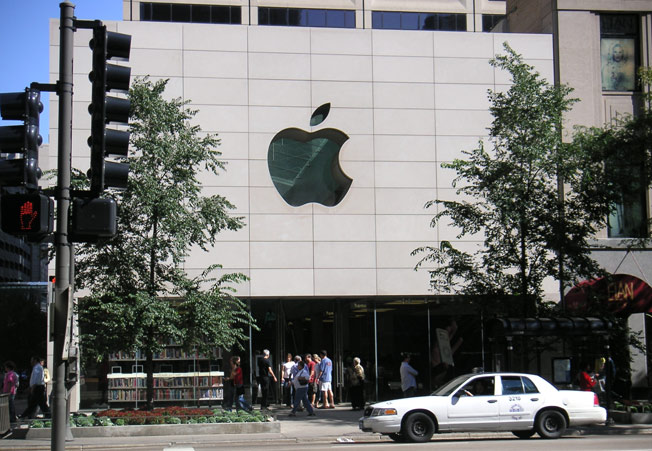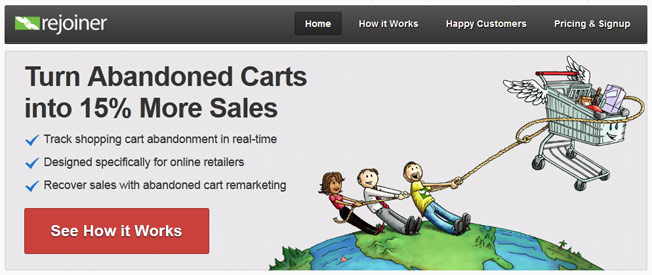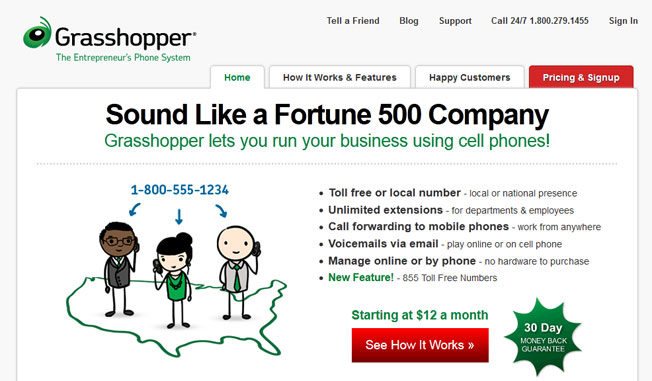Selling online or off can be tricky.
In either environment, you’re trying to figure out what it is that people need or want and what it is that they will buy.
And often, people aren’t interested in buying a product or service. They’re interested in the benefit that comes from buying, not the product or service itself.
Someone who buys a weight-loss product isn’t that interested in the product. They’re looking for the benefit it provides–the ability to lose weight.
So what they really want, what they really care about, is losing weight, not buying a product. They care about the benefit they’ll personally receive.
If we take this one step further, we’ll see that people are looking for even more than this. Not only are they interested in a benefit, but they’re also interested in a certain return.
Continuing with the example of a weight-loss product, people not only want to lose weight, they also want to look great. They want all of the rewards that come from a more svelte physique. It’s not just about losing weight, but about having clothes that fit, having more confidence, and looking better at work and around town. People are interested in the payoff that comes from using a product or service.
This is why it’s important to ask what it is that you’re really selling. Without asking this question, you can stop short and just sell your product or service. If you sell fertilizer, you’ll tell people how great your fertilizer is and how much they need to buy it.
But if you go beyond the product itself and figure out what it is that people really want, you’re more likely to hit pay dirt. Instead of selling fertilizer, you’ll sell the dream of having the best looking lawn in the neighborhood. And as long as you aren’t lying, you aren’t being deceptive. You’re just figuring out what it is that people really want and selling that to them.
Let’s look at a few examples to see how this works.
Apple
Yes, everybody loves Apple, including marketing people. So what is it that Apple does so well?
Apple goes beyond just selling amazing computers. Instead of focusing on how advanced the technology is or the speed of their latest processor, they stop to ask what it is that people really want.
One thing they determined is that people don’t just want a faster computer or a mind blowing operating system – they want a cooler self-image. In short, they want a computer that does everything they need and that also functions as a fashion accessory at the same time.
This is the same thing Marlboro did years ago. At some point, they realized that they weren’t just selling the joy of inhaling tobacco smoke – they were selling a cooler self image.
We all know that this, unfortunately, was incredibly successful.
What Apple has done is no different. They figured out what people want and then found a way to give it to them. Sure, there are some people who want the latest and greatest technology, and there are other people who just want the cheapest computer. That’s why Sony, Dell, and Gateway exist.
But Apple found another market. They found a group of people who not only want a computer or mp3 player but also a fashion accessory that makes them look cool. The result? Apple is now the most valuable company in the world. Not bad for a business that sells fashionable computers.
Disney
Disney provides another excellent example. It’s easy to think that people visit one of their parks for the rides, but that’s not the case. They visit for the memories Disney provides. They visit for the family experience.
Disney knows this, so their advertisements emphasize happy families that are having a magical experience and get to take pictures with the lovable Disney characters. They don’t trumpet their latest and greatest rides or the newest technology. Instead, they show people that visiting Disney is a memorable experience for the entire family.
The result is that people pay $87 per person for a one-day ticket to the park and who knows how much on food and lodging. People aren’t paying that much money for the thrilling rides. They’re paying for a memorable experience.
Now that we’ve looked at some traditional business examples, let’s see how this principle translates to online businesses.
Rejoiner
Rejoiner is a Boston-based startup that offers a web application that helps to recover abandoned shopping carts. Here’s how it works:
When people visit an e-commerce site, it’s very common that they’ll abandon the shopping cart before completing the order. Rejoiner provides a way to get in touch with these people after they’ve left.
How? Their application saves any contact information that’s entered prior to being submitted. Thus, if someone enters their name and e-mail address, you can contact them to ask if they have any questions about the order they almost submitted. This may sound a little creepy, but it’s no different from a salesperson in a store asking someone if they found everything they needed as they are on the way out the door.
So what is Rejoiner really selling? What’s the payoff they’re providing? You could say that they’re providing cart-abandonment-recovery software, but who wants to buy that?
Instead, Rejoiner offers a way to recover lost revenue. That’s why on their homepage they clearly show the amount of revenue that’s been recovered in the past 90 days. A way to recover lost revenue is much more enticing than cart-abandonment-recovery software. Rejoiner knows this and does a great job of trumpeting the real reward of using their software.
Grasshopper
Another excellent example in the online arena is Grasshopper. On the surface, it looks like they offer a digital phone service for small businesses. Yes, that’s what they do, in a way, but it’s not very appealing. So what are they really selling?
They’re really selling a way for businesses to sound bigger than they actually are. A lot of companies would like to appear to be large and sophisticated, and Grasshopper makes this possible. By using their digital phone system, small businesses can sound like they have a professional office phone system with a toll free or local number, unlimited extensions, call forwarding to mobile phones, and voicemails via e-mail.
So what are they really selling? They’re selling an opportunity for small businesses to sound important and successful. That’s why they’re homepage headline says, “Sound Like a Fortune 500 Company.” It’s safe to say they know what they’re really selling.
How to Apply This to Your Business
At this point, you may be asking yourself, “That’s great, but how do I apply this to my business?” Here’s how:
Step 1: First re-consider your business and how you present it to customers. You may have been telling people for the last year that you sell “blank” product or service, but forget about that. Take a step back and consider what it is that you’re really selling. Try to get a fresh perspective on your product or service.
Step 2: Ask this question: What is it that my customers want? You may have something you like about what you offer, but what is it that your customers really want? Do they want more traffic for their website? Do they want to increase online sales? What do they dream about? Whatever it is, figure it out, and you’ll be on your way to positioning your product in the best way. You can also use a service like Qualaroo to ask customers what it is they’re looking for. The language you get from these customers will shape the marketing message that will most likely be the winning formula for years to come – so listen closely!
Step 3: The next step is to re-consider your site to see which copy needs to be re-written and which pages need to be optimized. The goal is to write new copy and change page layouts to see if you can increase conversion rates by positioning your product differently. Once you do, take some time to test the new concept. If it improves your rates, go with it; if not, try something else. Keep testing until you figure out what it is that you’re really selling and what it is that people really want.
So now that you’ve learned about this important marketing question, what is it that you’re really selling? Do you have a new take on your product or service? Is there something you’ve been missing and need to add to your presentation? Leave a comment and let’s talk.
About the Author: Joe Putnam is the founder of ConversionEngine, an agency that combines CRO with PPC to help businesses run profitable paid ad campaigns. He’s helped organizations increase SEO traffic 10X, cut their cost per acquisition in half, and 20X their leads from AdWords. Visit now to learn more.





Comments (17)